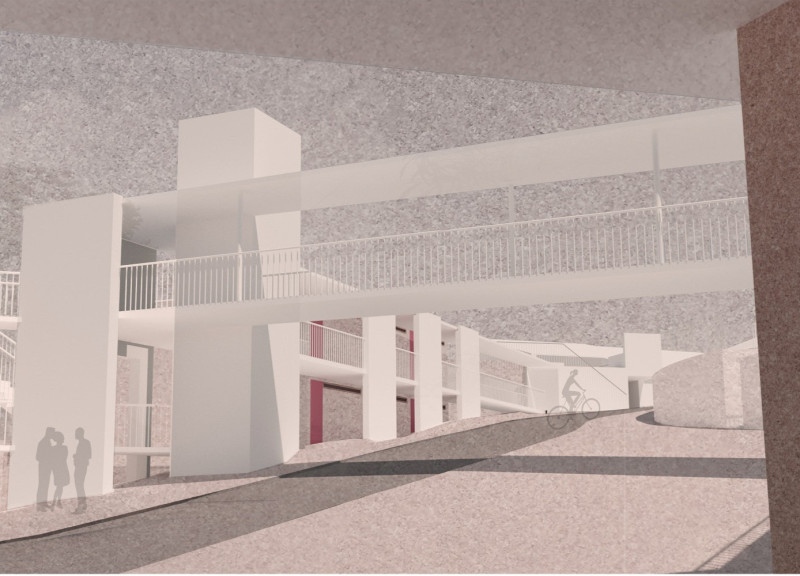5 key facts about this project
The project is an architectural design that embodies a thoughtful integration of various functions situated in a landscape marked by historical significance and natural beauty. It combines spaces for agriculture, gastronomy, and community engagement, reflecting a deep understanding of the local context. The design leverages the site’s topography, allowing for functional versatility and aesthetic cohesion.
The architecture of the project includes modular meeting rooms, a restaurant, an event space, and hospitality elements, all connected to promote interaction and accessibility. This multifaceted approach enables the structure to act as both a functional venue and as a gathering point for cultural activities, thereby enriching community life.
Unique Design Approaches
One of the distinctive aspects of this project is its emphasis on the three epochs that inform the architectural narrative: agriculture, gastronomy, and public life. By paying homage to the historical context of the region, the design incorporates elements reminiscent of traditional vineyard architecture while using modern techniques to create functional spaces. This approach facilitates a connection between past practices and contemporary needs, situating the project as a vital part of the local heritage.
Another notable feature is the architectural layout, which revolves around a central courtyard designed to serve as a communal space. The configuration encourages social interactions, while pathways integrated into the landscape promote exploration and accessibility throughout the site. Elevated walkways enhance connectivity and provide visual engagement with the surrounding environment, distinguishing this project from standard developments.
Material Selection and Sustainability
The choice of materials underscores the functional and aesthetic goals of the design. Concrete, steel, glass, wood, and local stone are utilized strategically to harmonize with the project’s narrative. The materials not only fulfill structural requirements but also resonate with the site's character. The integration of locally sourced materials supports sustainability and fosters a strong connection to the place.
The project’s architectural sections reveal a meticulous focus on spatial organization that enhances user experiences in both private and public areas. The design outcomes demonstrate a cohesive execution aimed at promoting community interaction and celebrating the local culture.
Overall, this architectural project stands as a testament to how thoughtful design can foster engagement, reflect historical context, and serve diverse functions. To gain deeper insights into the project's architectural plans, sections, and unique design ideas, readers are encouraged to explore the complete project presentation.





















































